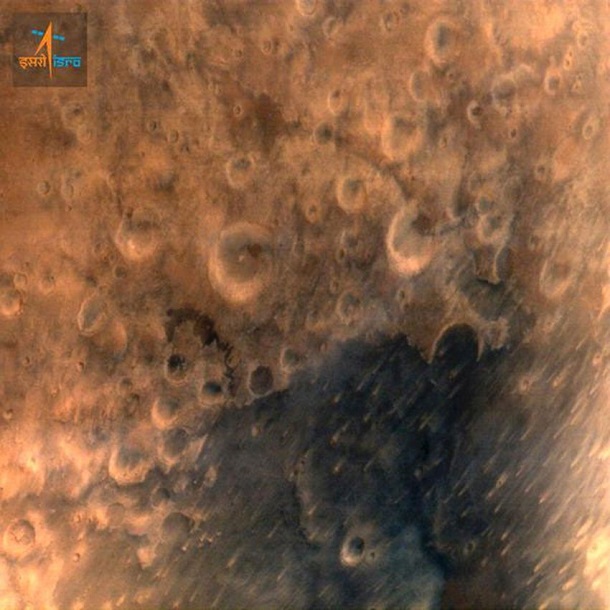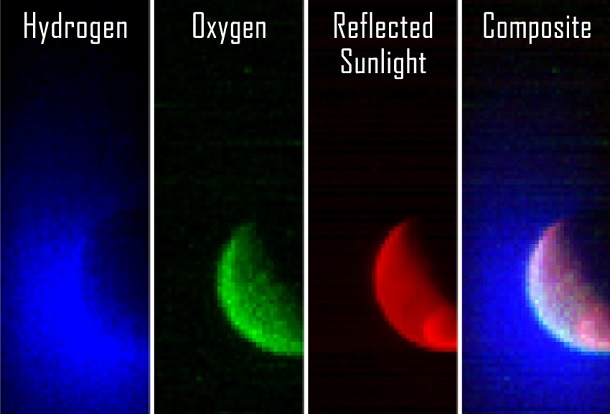Two probes have reached Mars in this week. The technique funktionier apparently perfectly: “Mangalyaan” from India and “Maven” from the United States have sparked the first recordings to earth.
“Mangalyaans” entry into the Martian orbit has shifted over India in a rapture on Wednesday. Now the spacecraft has sent a first snapshot of the Red Planet to Earth. On the slightly fuzzy recording craters of different sizes are very easy to recognize.
“The view is beautiful up there,” wrote the Indian space agency on Thursday on Facebook a photo of the Martian surface. It was taken from an altitude of about 7300 kilometers. “The probe is functioning properly,” said a spokesman for the space agency.
“Mangalyaan” (Hindi for “Mars-vehicle”) had, after months of travel on Wednesday reached the Mars orbit. It is the first probe from Asia that has come so far, which was widely celebrated in India. “The race to Mars is won,” headlined the daily newspaper “Hindustan Times”. The “Times of India” exulted: “India has entered the super exclusive club Mars.” So far, only missiles from the United States, Russia and Europe have reached the Red Planet.

The main objective of the Mars project is the image boost. New scientific findings can hardly be expected. Compared to all other Indian missions with total projected cost of the equivalent of almost 55 million euros is very low. Even the Hollywood space movie “Gravity” was much more expensive at the equivalent of 78 million euros.
The Indian project is also cheaper than the “Maven” mission of the U.S. space agency Nasa, which costs more than 500 million euros. The unmanned spacecraft had arrived two days before “Mangalyaan” on Mars. Also, “Maven” has now come first, but still very blurry images. The ultraviolet images show components of the Martian atmosphere in false colors, for example, the scattered hydrogen atoms sunlight.
“Maven” is to explore how the initially warm and humid climate of the Red Planet over the course of several billion years, could convert to a dry, cold climate. The researchers also hope to gain insight into the question of whether there was once life on Mars. The Red Planet is currently being taken not only by satellite under the microscope. On the Martian surface roll the two research robot “Curiosity” and its predecessor “Opportunity”.
[adrotate group=”12″]

